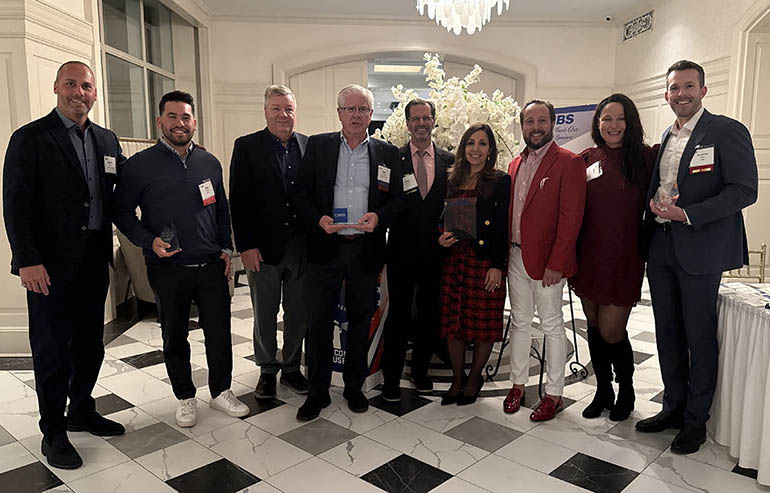News:
Long Island
Posted: June 10, 2013
Environmental due diligence: How to work effectively with a bank's consultant
A few years back, I outlined the "team" approach to conducting environmental due diligence. The team consisted of an experienced phase one consultant, a reputable environmental contracting firm and experienced environmental attorney. Each of those professionals has a skill set that can assist a purchaser or lender on the investigation required, cost/time frame to address the contamination and legal requirements. Depending on which regulatory body has jurisdiction (sometimes there can be more than one) there can be nuances that vary from state to state and regulator to regulator.
Many times a bank approved consultant will issue a phase one Environmental Site Assessment (ESA) that outlines a Recognized Environmental Condition (REC) or Area of Concern (AOC) that the bank should be aware of. The most common REC's consist of buried heating oil tanks that are no longer in service, the presence of gasoline tanks that appear on old historical maps or a former/current drycleaner that conducted on-site operations.
In most cases the lender communicates the issue to the borrower stating that more investigation needs to be conducted (phase 2) in order for them to continue with the loan process. Many phase one consultants offer that service to their clients. Others can recommend firms if they do not handle in house. Upon issuing the proposal, the borrower may decide to get a competing bid from another company. This is a prudent step and many times that price comes back less expensive than the lender's consultant. However, as with many things in life, the devil is in the details. The lender's consultant is taking into consideration the lender's risk and how to mitigate that risk. Details like how many borings are being advanced, where are they being advanced, what depth are the samples being obtained from, what media is being sampled (soil/groundwater or both), what kind of laboratory analysis is being conducted, what kind of insurance does the firm carry? There can be thousands of dollars difference in the cost depending on the scope of work provided.
Without showing a potential second bidder a scope of work, they are relying on their experience and budget a client may have outlined to them. The result many times is a report several weeks later that was commissioned by the borrower but does not address the lender's risk. The lender's consultant now has the task of explaining to their client why the work done is not acceptable. This causes more delays in the closing, and additional cost to the borrower who has to repeat the process. Over the years, I have found that the best way to avoid these issues is to communicate with all parties involved before any work is done. The lender's consultant should provide a clear scope of work outlining the who, what, and where in line items form. The lender can present that scope of work and cost to the borrower who can in turn price out an "apples to apples" proposal. If the scope of work is consistent, and the pricing better, then the borrower's firm of choice should be awarded the project.
Nobody likes to lose a project but I think most consultants would prefer to see the work completed as per their scope of work. They can then provide their client a review of the report (there may be a fee for that service) and a conclusion that allows the lender to move forward. This is of course predicated on no impact (contamination) is discovered from the borrower's consultant.
An example of where the lender's consultant and borrower do not always see eye to eye is addressing old out of service heating oil tanks. Whether they are buried underground or vaulted behind concrete in the basement, the New York State Department of Environmental Conservation (NYSDEC) has rules on how to address them. Any tank above 1,100-gallons is regulated by the NYSDEC. Taking the tanks out of service by either abandonment or removal needs to include soil samples around the tank vessel. This is not always conducted as soil sampling will take several days at a laboratory delaying the completion of the report. In addition, soil sampling will add to the cost of the final report dissuading some from including it.
The key with any successful project is good communication and environmental projects are no exception. Speaking with the lender's consultant is always a good idea as they are the ones who must report back to their client that the work submitted is appropriate in scope, and addresses the lenders risk. This will save time and money in the long run.
Chuck Merritt is the president of Merritt Environmental Consulting Corp., Hauppauge, N.Y.
Tags:
Long Island
MORE FROM Long Island
Suffolk County IDA supports expansion of A&Z Pharmaceuticals
Hauppauge, NY The Suffolk County Industrial Development Agency (IDA) has granted preliminary approval of a financial incentive package that will assist a manufacturer in expanding its business by manufacturing more prescription (Rx) pharmaceuticals in addition to its existing over-the-counter

Columns and Thought Leadership

The evolving relationship of environmental consultants and the lending community - by Chuck Merritt
When Environmental Site Assessments (ESA) were first part of commercial real estate risk management, it was the lenders driving this requirement. When a borrower wanted a loan on a property, banks would utilize a list of “Approved Consultants” to order the report on both refinances and purchases.








.gif)
.jpg)